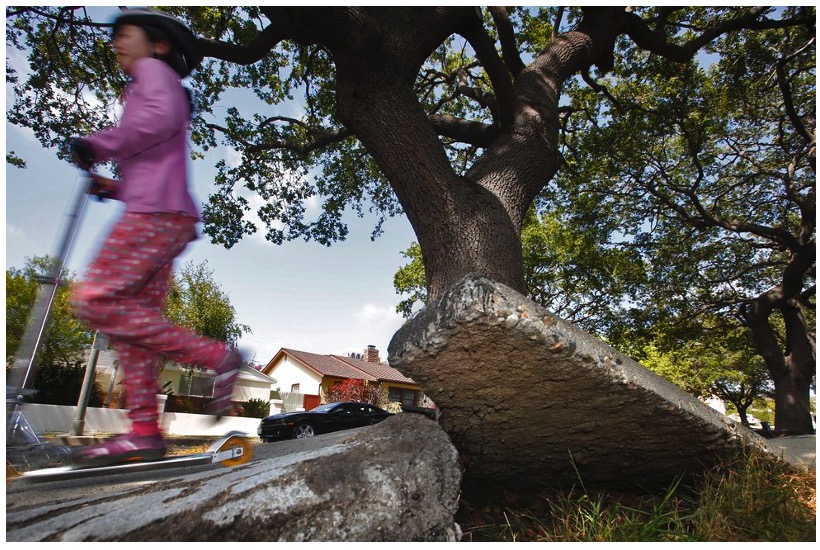Comments
PLANNING WATCH - In Los Angeles City Hall offers a few platitudes and token efforts to address the rapidly worsening climate crisis. For example, former Mayor Eric Garcetti posted a temporary executive document, LA’s Green new Deal, on the City’s website. He also proposed a decade of action to combat climate change. LA’s Green New Deal is, however, a short-lived executive document, not a permanent plan that the City Council adopted after hearings and an EIR. It is only a matter of time until it is filed away at LA’s Piper Tech repository.
As for Eric Garcetti’s decade of action, it has seven years left and is in the hands of his successor, Karen Bass. But, so far, Mayor Bass does not have her own approach to climate change. Instead, she keeps her predecessor’s executive document as a placeholder.
Los Angeles also has a small Office of the Climate Emergency Mobilization. Its main focus is adaptation – not mitigation – to excessive heat, an immediate outcome of climate change. As for the State of California’s requirement that cities add an Environmental Justice element to their General Plan, Los Angeles could care less. Ditto for a voluntary Climate Change element. Even though the Governor’s Office of Research and Planning has prepared templates for these General Plan elements, LA’s City Hall has yet to move on them. In 2021 the LA City Council did, however, adopt an updated Safety Element. It devotes two pages to the climate crisis, mostly references to the former Mayor’s temporary executive document on adapting to a hotter environment.
Does this mean that City Hall is oblivious to the climate crisis? You can be the judge but be sure to consider the following policies that adversely impact the climate crisis. Apparently, City Hall doesn’t realize that their regular infrastructure and land use land use practices adversely impact the environment. Even though most of these projects require Environmental Impact Reports, the LA City Council sweeps aside their climate findings through cookie-cutter Statements of Overriding Considerations.
They also fail to connect the following policies to the worsening climate crisis.
-
The city’s land use and infrastructure practices make most residents automobile dependent. Near all of those who can afford to drive, do so, even when transit stops are close by. This is why most of those who take buses and subways are transit dependent seniors, students, handicapped, and low income. As for walking and biking in Los Angeles, there are a host of barriers.
-
While METRO, the LA metropolitan area’s transit agency, has an ambitious light and heavy rail construction program, the agency and the City of Los Angeles are not implementing first-last mile plans for these lines. For example, the Purple Line Subway Extension, on Wilshire Boulevard between Western and the West LA Federal Building, has three first-last mile proposals. But neither METRO nor Los Angeles are funding them. As a result, nine miles of new subway won’t have curb extensions, street trees and landscaping, bike lanes, bike parking, bike sharing, wayfinding signage, streetscape, multi-modal interfaces at stations, improved sidewalks, curb cuts, crosswalks, and parking lots.
-
Sidewalk repairs and ADA curb cuts. Los Angeles has 9000 miles of sidewalks, and according to the previous City Controller Ron Galperin, most of them are in terrible shape. They are cracked, crumbling, lifted by tree roots, and often missing the curb cuts (corner ramps) required by the Americans with Disabilities Act. Losing a 2015 lawsuit, Los Angeles committed itself to spend $1.4 billion on sidewalk and curb cut repairs over a 30 year period. Ron Galperin’s report, however, found that the implementation of this program has been haphazard. Pedestrian conditions are getting worse, not better.

-
Expensive, automobile-oriented, high rise apartments are green-lighted across Los Angeles. Despite population loss and high vacancy rates, Los Angeles has a construction boom in these market rate and luxury apartments.
-
Poorly enforced mansionization ordinances. Thousands of boxy, oversized single family homes are proliferating across Los Angeles, except for neighborhoods protected by HPOZ ordinances. Since McMansions increase the use of fossil fuels and generation of air pollutants, they contribute to the rising CO2 levels that drive the climate crisis.
-
Slow roll out of rooftop solar. Los Angeles has about 300 sunny days per year, ideal for solar. But despite perfect weather, rooftop solar is a time consuming and expensive undertaking. On a personal note, I have been at it for over a year and a half, and the LADWP still has not installed my new electric meter.
-
Under-planted and under-maintained urban forest. Trees have several unusual qualities. They help cities adapt to climate change because their shade makes it easier for pedestrians to walk on hot, sunny days. Trees are also nature’s best form of climate change mitigation because they sequester carbon extracted from rising atmospheric CO2 levels. Unfortunately, in Los Angeles the many benefits of planting and caring for city street trees are not realized because the city’s urban forest is contracting in the face of urban development.
These counterproductive policies are a consequence of City Hall decision makers defining their role as removing regulations regarding real estate speculation - with little concern for the climate impacts on their constituents or the city of Los Angeles at large.
(Dick Platkin is a retired Los Angeles city planner who analyses local planning issues for CityWatchLA. He is a board member of United Neighborhoods for Los Angeles (UN4LA). Previous columns are available at the CityWatchLA archives. Please send questions and corrections to [email protected].)
















